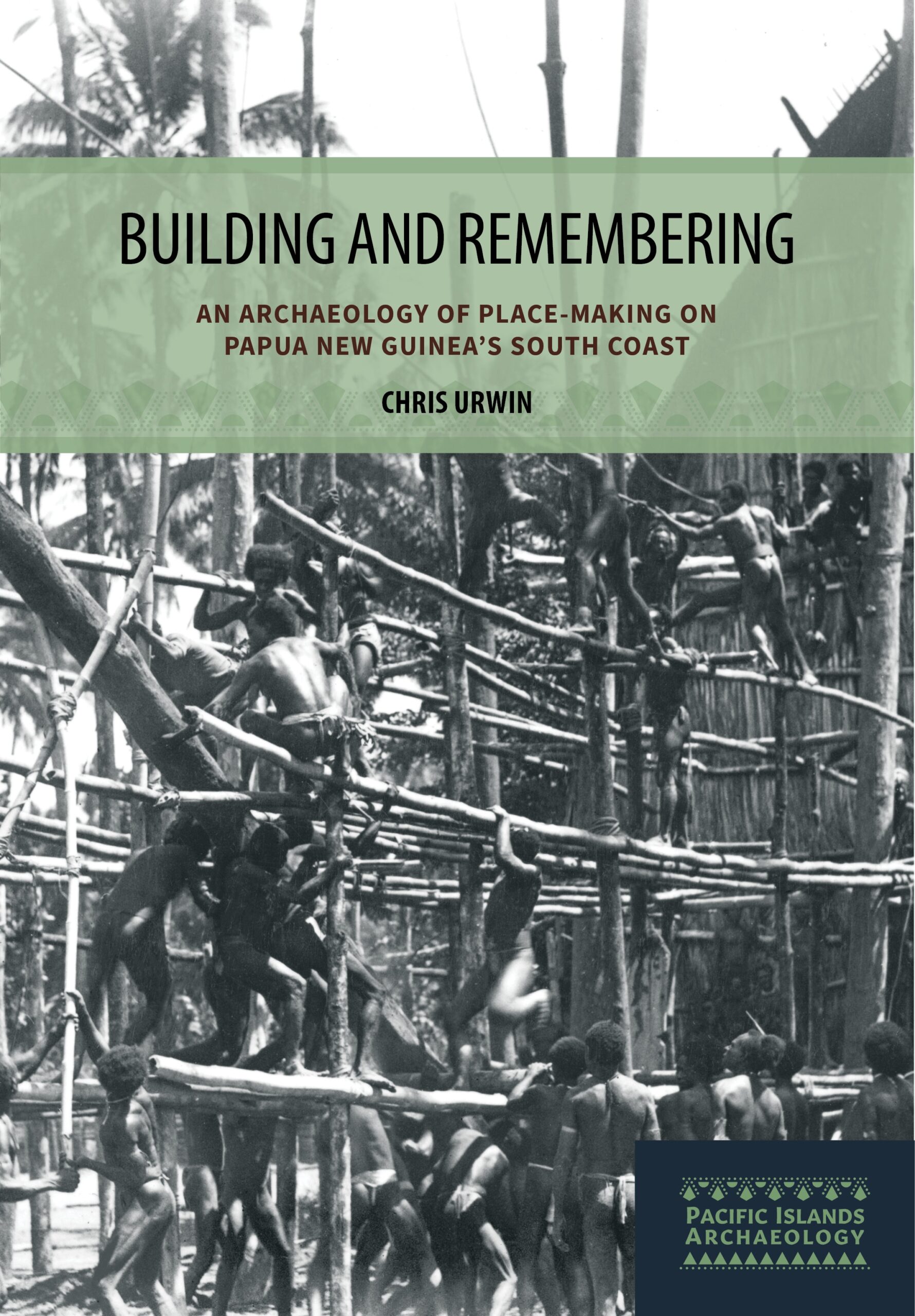Building and Remembering: An Archaeology of Place-Making on Papua New Guinea’s South Coast
Awards
- Winner of the John Mulvaney Book Award, 2023
- About the Book
-
Building and Remembering is a multidisciplinary study of how memory works in relation to the material past. Based on collaborative ethnoarchaeological research carried out in Orokolo Bay (Papua New Guinea), Chris Urwin explores oral traditions maintained and produced in relation to artifacts and stratigraphy. He shows how cultivation and construction bring people from Orokolo Bay into regular contact with pottery sherds and thin layers of black sand. Both the pottery and the sand are forms of material evidence that remind people of the movements and activities of their ancestors, and they help sustain stories of origins and connections. The sherds remind people of the layout of their ancestors’ villages, and of the annual maritime visits by Motu people who came from 400 km to the east. The black sand evokes events of the distant past when their ancestors created the land through magic. Villagers in Orokolo Bay have intimate knowledge of the contents of the subsurface, and places where people work and dig more regularly are thought of as especially ancient. Here, people conduct their own form of “archaeology” as part of everyday life.
This book interweaves such community constructions of the past with the emergence of large coastal villages in Orokolo Bay and across a broader span of the south coast of Papua New Guinea. The villages housed dense populations and hosted elaborate masked ceremonies that could span decades. When Sir Albert Maori Kiki—the former Deputy Prime Minister—moved to Orokolo Bay in the mid-1930s, he was mesmerized by the place, which appeared like “a modern metropolis . . . buzzing with noise and activity.” Yet little is known of when these villages originated or how they developed. In this book, archaeological digs and radiocarbon dating are used to gain insight into how several Orokolo Bay sites developed, focusing on the key origin and migration village of Popo. Village elders share their understandings of ancestral places during surveys and through oral traditions. People lived in Popo for some five hundred years, moving to, through, and from the estates, expanding and at times shifting the village to access the social and subsistence benefits of coastal village life.
- About the Author(s)
-
Chris Urwin, Author
Chris Urwin is a research fellow at Monash University and the Australian Research Council Centre of Excellence for Australian Biodiversity and Heritage.
- Reviews and Endorsements
-
- Building and Remembering is a monumental and fascinating achievement. It not only presents a wealth of ethnographic and archaeological information that is relevant for those interested in the distant and more recent past of the South Coast of Papua New Guinea, but it is also a case study in how societies remember, how societies achieve stability of social formations over time and how people’s lives and memories are intertwined with their physical environments. . . . One of the most fascinating aspects of the book is the author’s discussion and interpretation of local engagements with artefacts and sub-surface observations that are being uncovered during various agricultural activities. Urwin convincingly argues that these processes constantly shift and rework the past and create contexts in which memories are formed and reevaluated.
—Martin Porr, University of Western Australia, Archaeology in Oceania (2023) - The book draws Orokolo understandings of the past into dialogue with archaeological research to produce its accounts of landscape history, but also to produce a kind of meta-analysis of how archaeologists and Indigenous people engage in forms of memory work. . . . Urwin’s book reminds us that history may be shaped by the influence of external forces but can only be experienced and remembered in local contexts. It is an interesting example of what deeper engagement with Indigenous perspectives can bring to archaeological research.
—Tim Thomas, University of Otago, Australian Archaeology
- Building and Remembering is a monumental and fascinating achievement. It not only presents a wealth of ethnographic and archaeological information that is relevant for those interested in the distant and more recent past of the South Coast of Papua New Guinea, but it is also a case study in how societies remember, how societies achieve stability of social formations over time and how people’s lives and memories are intertwined with their physical environments. . . . One of the most fascinating aspects of the book is the author’s discussion and interpretation of local engagements with artefacts and sub-surface observations that are being uncovered during various agricultural activities. Urwin convincingly argues that these processes constantly shift and rework the past and create contexts in which memories are formed and reevaluated.





